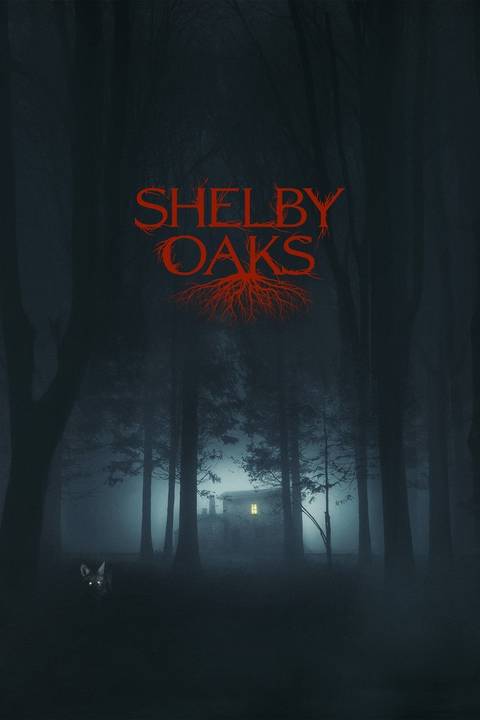Chris Stuckmann‘s long-awaited first feature film finally hits theaters this weekend, and it’s one of the most thrilling horror movies released this year. Titled Shelby Oaks, Stuckmann’s directorial debut tells the story of Mia Brennan (Camille Sullivan), who has spent several years searching for her missing sister, Riley (Sarah Durn), a popular YouTuber who investigated paranormal activity and vanished, last seen in the abandoned town of Shelby Oaks. Part found-footage, part mockumentary, and part traditional narrative, Shelby Oaks is Stuckmann’s love letter to the horror genre, blending techniques that propel the story while paying homage to horror classics.
One of the film’s major influences, especially in the third act and ending of Shelby Oaks, is the 1968 film Rosemary’s Baby, directed by Roman Polanski. In a fascinating homage, Stuckmann doesn’t lift the exact story beats of Polanski’s horror classic, but instead weaves his own powerful thematic points into a similarly structured conclusion, crafting a chilling climax to his first horror film that resonates with audiences long after the credits roll. In the film’s final scenes, Stuckmann both honors what came before and creates a bold new path for himself and his filmography.
‘Shelby Oaks’ Subtly Mixes Meaningful Character Arcs With Horror Homage
The beginning of Shelby Oaks, presented in a mockumentary format, tells Riley’s story through “archival” footage of her YouTube channel and talking-head interviews with Mia, whom the audience follows for the majority of the movie. While we see Mia’s determination to find her sister, the film briefly touches on her own familial struggles, including her desire to have children with her husband and her inability to conceive. Mia has a parental and protective streak throughout the film, clearly because of the close relationship with her sister, but also because it is the only person she has left to protect.
Through a series of unsettling events, it’s revealed that Riley has been held captive and forced to procreate as part of a ritualistic demonic ceremony. If that sounds familiar, it’s because a similar plot point occurs with Mia Farrow’s Rosemary Woodhouse, though Polanski’s film handles it more subtly and makes it the central focus. The reason for Riley’s abduction is the big reveal in the third act, and it’s only in the aftermath that things really start to shift towards the disturbing connotations of Rosemary’s Baby, cementing Shelby Oaks‘ ending as one of the more shocking and powerful conclusions to a horror movie in recent memory.
The ‘Rosemary’s Baby’ Style Ending of ‘Shelby Oaks’ Results in a Disturbing Conclusion
After Mia (supposedly) stops a disturbing ritual and saves Riley and her baby, things seem to conclude on a hopeful, if not dramatic note. However, Stuckmann employs clever pacing and on-the-nose dialogue to give the documentary director’s character a sense that the story isn’t quite over yet, even as the runtime is nearly up. It’s at the end of the film where it’s revealed that Riley believes her baby is the incarnation of the devil that her captor worshiped, and that it is too dangerous to be left to live, and tries to kill the baby, thus getting into an altercation with Mia.
Suddenly, Mia is forced to fight the sister she has spent the entire film trying to find. In his Rosemary’s Baby homage, Stuckmann also gives Mia an impossible choice: save a baby (which could be the incarnation of the devil) and give in to her paternal instincts, or trust her sister, whom she had desperately wanted to reunite with but now doesn’t even recognize. In the end, Riley’s fears seem to be true, and she falls out of a window trying to kill her baby before she is devoured by “hellhounds” that have been teased throughout the movie.
The deranged sounds of dogs chewing on flesh overlap with the baby crying, and the final shot is of the devil at the center of the film, standing over Mia as she cries for her sister. There’s no real happy ending in Shelby Oaks, and that’s part of what makes the horror movie work. It’s also an ending that is the perfect example of a homage that doesn’t feel like a rip-off, instead using it to drive its own themes and story forward in the most satisfying (and frightening) way possible. Shelby Oaks is in theaters now. Rosemary’s Baby is streaming on Paramount+.

- Release Date
-
October 2, 2025
- Runtime
-
99 minutes
- Writers
-
Chris Stuckmann, Sam Liz
- Producers
-
Trevor Macy, Aaron B. Koontz, Mike Flanagan, Cameron Burns, Sean E. DeMott, Melinda Nishioka, Ashleigh Snead


